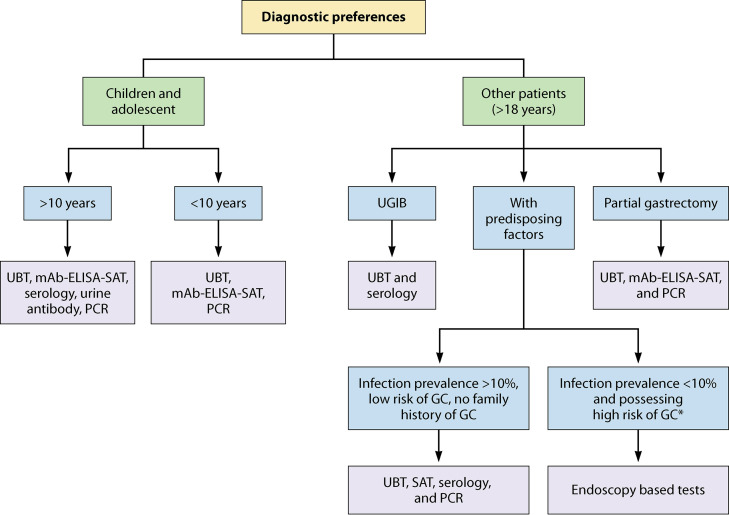FIG 2.
Preferences regarding diagnostic methods. Age and clinical conditions (if any) should be considered when diagnostic methods are being selected. For children more than 10 years old, noninvasive tests, such as the urea breath test (UBT), monoclonal antibody (MAb) ELISA-based stool antigen test (SAT), serological tests, and antibody detection performed with urine specimens, are considered. For children less than 10 years old, due to immature immune response, antibody detection methods (serology and antibody detection in urine) are not considered; in such cases, the UBT or the monoclonal antibody ELISA-based SAT is the most appropriate test. The UBT and serology are considered for patients with upper gastrointestinal bleeding (UGIB), whereas for patients with partial gastrectomy, monoclonal antibody ELISA-based SAT is recommended. In patients with high risk of developing gastric cancers (*, those having active or history of PUD, low-grade gastric MALT lymphoma, history of endoscopic resection of early gastric cancer, or age over 60 years and those belonging to a family with a history of gastric cancer or a population at high risk for gastric cancer), endoscopy-based detection methods are recommended. Molecular methods, such as RT-PCR, can be conducted on specimens such as biopsy specimens, gastric juice, and stool.

